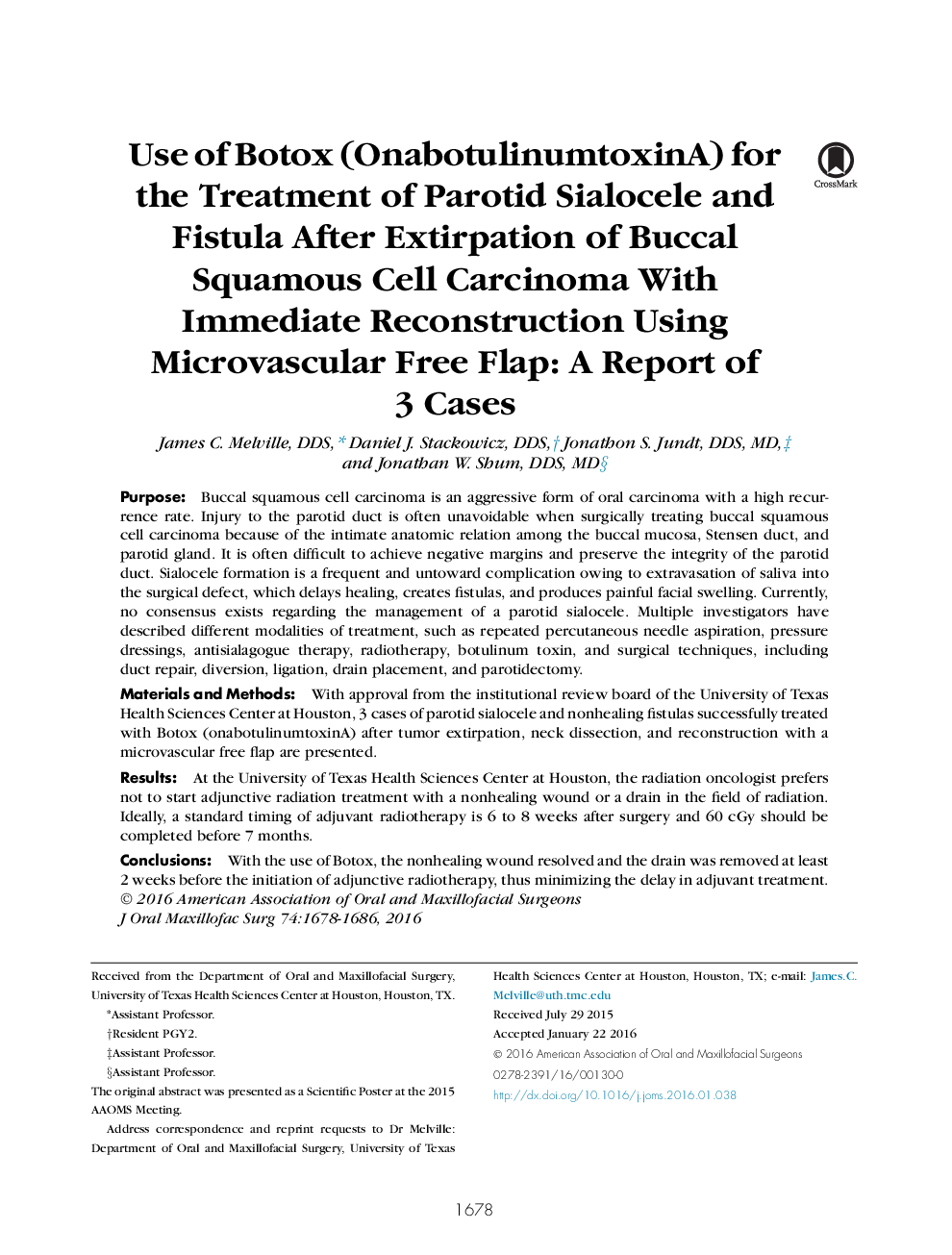| کد مقاله | کد نشریه | سال انتشار | مقاله انگلیسی | نسخه تمام متن |
|---|---|---|---|---|
| 3155427 | 1198079 | 2016 | 9 صفحه PDF | دانلود رایگان |

PurposeBuccal squamous cell carcinoma is an aggressive form of oral carcinoma with a high recurrence rate. Injury to the parotid duct is often unavoidable when surgically treating buccal squamous cell carcinoma because of the intimate anatomic relation among the buccal mucosa, Stensen duct, and parotid gland. It is often difficult to achieve negative margins and preserve the integrity of the parotid duct. Sialocele formation is a frequent and untoward complication owing to extravasation of saliva into the surgical defect, which delays healing, creates fistulas, and produces painful facial swelling. Currently, no consensus exists regarding the management of a parotid sialocele. Multiple investigators have described different modalities of treatment, such as repeated percutaneous needle aspiration, pressure dressings, antisialagogue therapy, radiotherapy, botulinum toxin, and surgical techniques, including duct repair, diversion, ligation, drain placement, and parotidectomy.Materials and MethodsWith approval from the institutional review board of the University of Texas Health Sciences Center at Houston, 3 cases of parotid sialocele and nonhealing fistulas successfully treated with Botox (onabotulinumtoxinA) after tumor extirpation, neck dissection, and reconstruction with a microvascular free flap are presented.ResultsAt the University of Texas Health Sciences Center at Houston, the radiation oncologist prefers not to start adjunctive radiation treatment with a nonhealing wound or a drain in the field of radiation. Ideally, a standard timing of adjuvant radiotherapy is 6 to 8 weeks after surgery and 60 cGy should be completed before 7 months.ConclusionsWith the use of Botox, the nonhealing wound resolved and the drain was removed at least 2 weeks before the initiation of adjunctive radiotherapy, thus minimizing the delay in adjuvant treatment.
Journal: Journal of Oral and Maxillofacial Surgery - Volume 74, Issue 8, August 2016, Pages 1678–1686